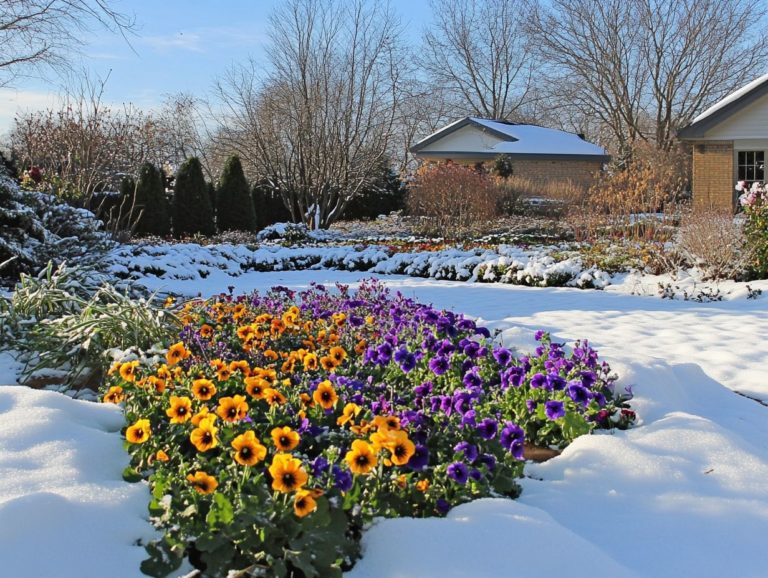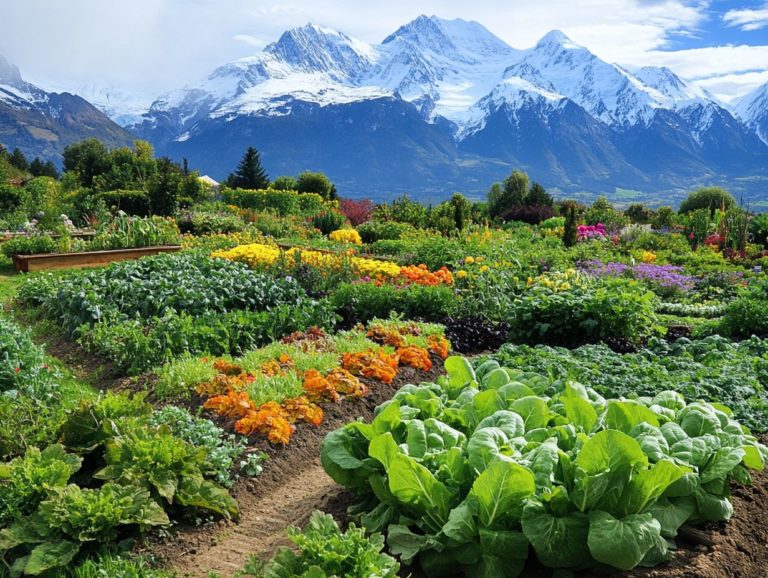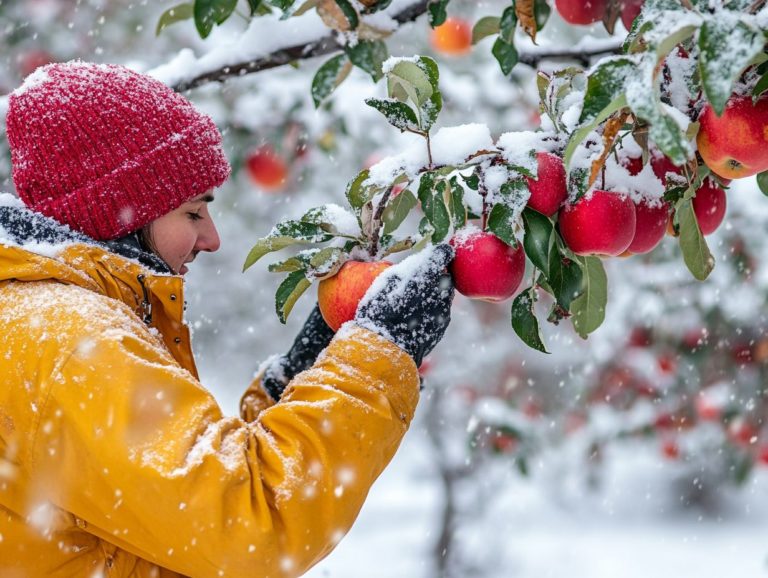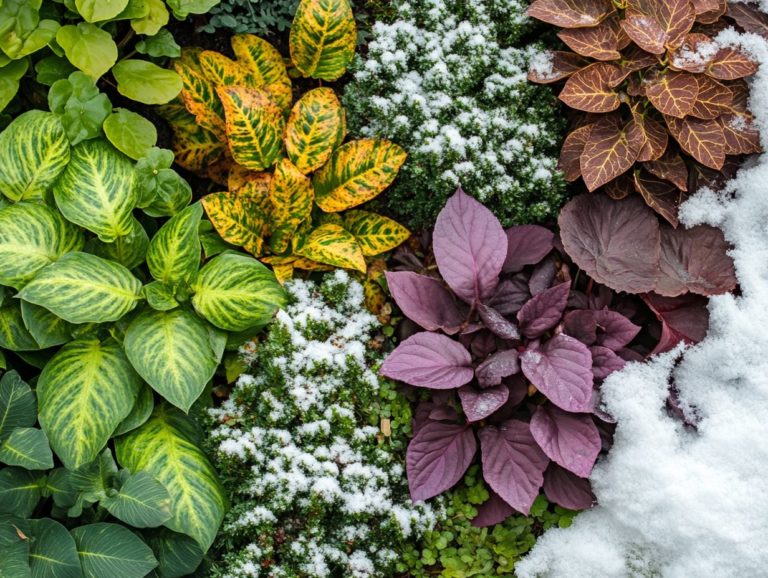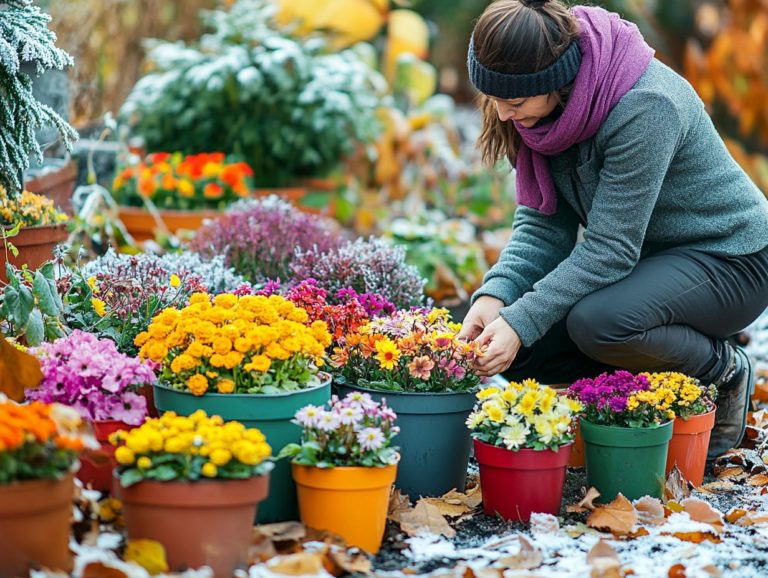Guide to Plant Hardiness Zones
When it comes to gardening, understanding zones showing which plants can grow in your area is essential for your success.
These zones are your roadmap, helping you identify which plants will thrive in your unique climate. Factors such as soil types and climate conditions play significant roles in plant growth, and you ll want to consider all of them.
Get ready to uncover the fundamentals of plant hardiness zones, including how to pinpoint your own growing zone using the United States Department of Agriculture (USDA) Hardiness Zone Map.
You ll discover the ideal plants for each zone, strategies to adapt to varying conditions, and gardening tips for shielding your plants from harsh weather.
Whether you’re a seasoned gardener or just stepping into this green world, this comprehensive guide will arm you with the knowledge needed to cultivate a successful garden.
Contents
- Key Takeaways:
- Understanding Plant Hardiness Zones
- Factors Affecting Plant Hardiness
- Determining Your Plant Hardiness Zone
- Choosing Plants for Your Zone
- Adapting to Different Zones
- Protecting Plants in Extreme Zones
- Frequently Asked Questions
- What is a Guide to Plant Hardiness Zones?
- How are Plant Hardiness Zones determined?
- Why is it important to know your Plant Hardiness Zone?
- Are Plant Hardiness Zones the same in every country?
- How can I find out my Plant Hardiness Zone?
- Can plants survive outside of their recommended Plant Hardiness Zone?
Key Takeaways:
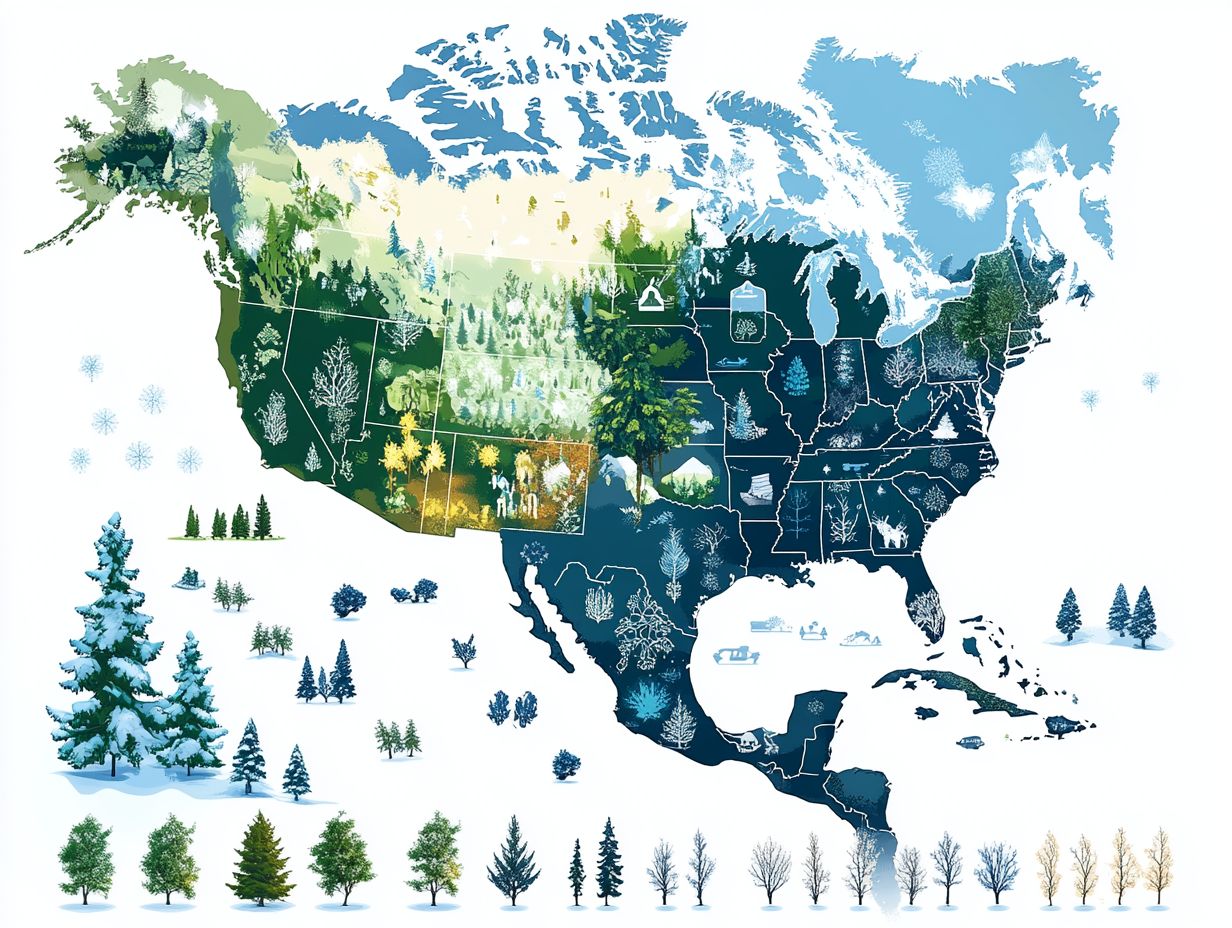
- Understand plant hardiness zones to determine which plants will thrive in your climate and soil conditions.
- Use the USDA Hardiness Zone Map to figure out your zone and choose the best plants for your region.
- Adapt to different zones by using strategies like microclimates and protective measures to grow plants outside of their usual range.
Understanding Plant Hardiness Zones
Understanding plant hardiness zones is essential for you as a gardener. Defined by the USDA, these zones reveal the average temperatures and climate conditions that various plants can endure, ultimately impacting your gardening success.
The USDA map clearly delineates these hardiness zones, enabling you to pinpoint your specific growing zone based on local variations. This helps you pick plants that will thrive in your unique climate, whether they are resilient cold-hardy perennials or vibrant annuals.
By grasping these concepts, you can make informed decisions about plant selection and care. This maximizes your garden’s potential across diverse gardening regions.
What are Plant Hardiness Zones?
Plant hardiness zones, established by the USDA, serve as essential classifications that categorize regions based on their average temperatures, significantly influencing your gardening success.
These zones provide invaluable insights, guiding you in selecting the right plants tailored to your specific climate. By identifying which zone your region falls into, you can make informed choices about the varieties of flowers, vegetables, or shrubs to cultivate. It s crucial to consider climate conditions, factoring in elements like minimum winter temperatures and growing seasons.
If you garden in Zone 5, you can grow perennials that thrive in milder areas, giving you the opportunity to create a more diverse and vibrant garden, including native plants. This knowledge empowers you to refine your gardening practices, ultimately boosting your chances of achieving a flourishing landscape and utilizing gardening tools effectively.
Factors Affecting Plant Hardiness
Several key factors influence plant hardiness, including soil conditions and temperature ranges. These elements play a crucial role in a plant’s survival and growth within a specific hardiness zone as defined by the USDA.
Understanding these factors is vital for gardeners seeking to optimize their success. Consider frost dates and local variations, as these can dramatically affect growing seasons and the viability of different plant varieties.
By being attuned to these elements, you can make informed decisions about plant selection and refine your overall gardening strategies, taking into account plant labels for better identification.
Climate and Soil Considerations
When you evaluate plant hardiness, it’s essential to consider climate and soil conditions. These factors can dictate the success of your gardening endeavors, especially regarding temperature zones.
Understanding local temperature patterns, humidity levels, and rainfall fluctuations empowers you to make informed choices about the best plants to cultivate in your environment. For example, in a warmer climate, drought-tolerant plants may thrive. In contrast, cooler, wetter regions might welcome lush foliage and vibrant blooms.
The soil composition whether sandy, loamy, or clay plays a significant role in drainage and nutrient availability. Both are critical for healthy plants and effective root systems.
You can enhance your soil by adding compost or mulch, giving your plants the best chance to flourish. By adapting your gardening practices to these local variations, you can significantly boost the health and yield of your low-maintenance garden.
Determining Your Plant Hardiness Zone
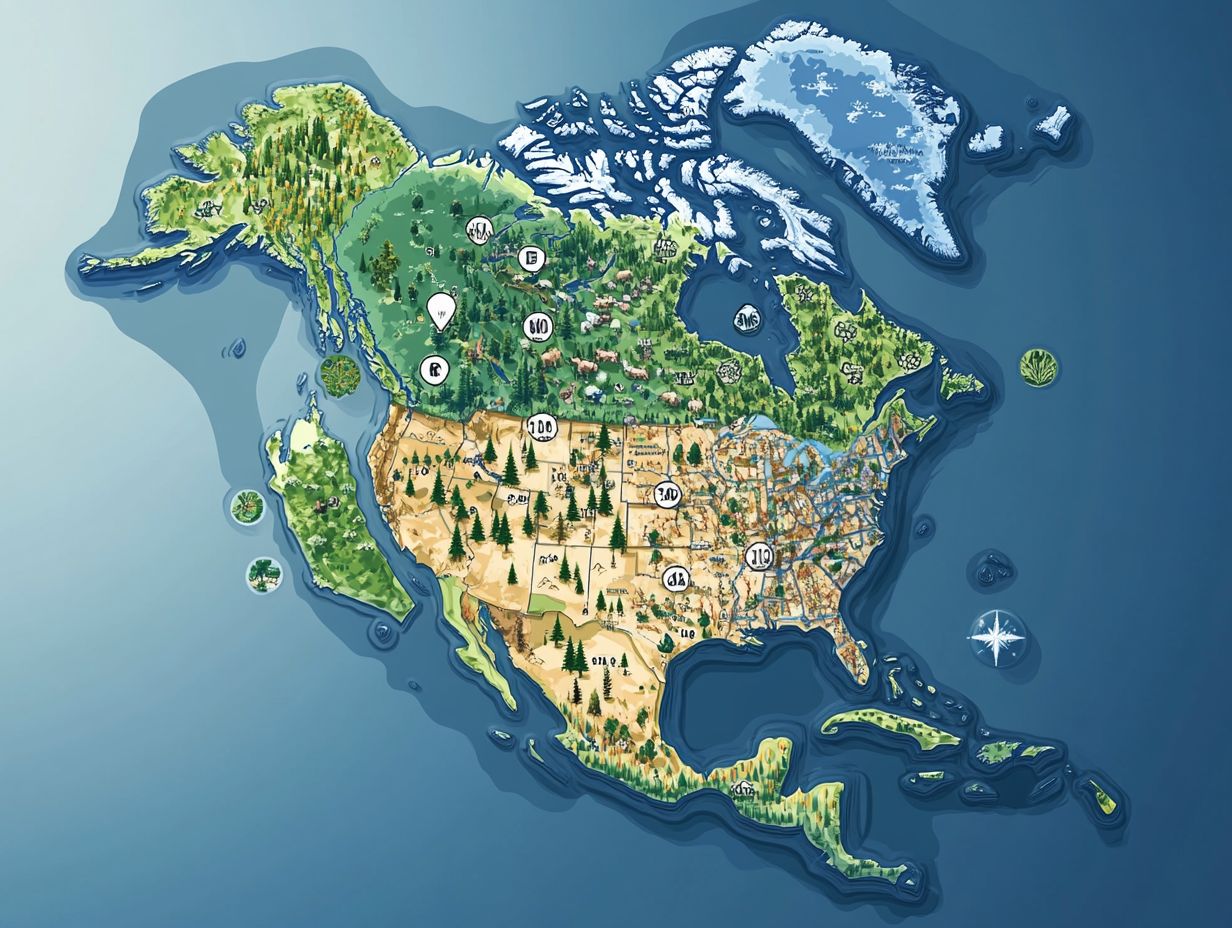
Determining your plant hardiness zone is straightforward when you use the USDA Hardiness Zone Map. This essential tool allows you to pinpoint your specific zone using your zip code and local climate conditions.
The map is instrumental for gardening success. It guides you in selecting the ideal plants that are destined to flourish within your designated zone. By understanding the importance of this map, you can make well-informed decisions about which annual and perennial plants to include in your garden, resulting in healthier plants and a more vibrant landscape.
Using the USDA Hardiness Zone Map
The USDA Hardiness Zone Map is an invaluable tool for gardeners. It offers a clear visual guide to various zones and helps you identify your specific growing conditions.
By consulting this map, you can determine the temperature range that different plants can endure. This knowledge is crucial for selecting the most suitable varieties for your garden. Pay attention to the average minimum temperatures for each zone, as these figures are vital for ensuring your plants survive the cold months.
Also, consider local variations like soil quality, moisture levels, and microclimates small areas where the climate differs from the surrounding area. These factors can significantly influence plant growth.
By understanding these elements, you enhance your ability to choose the right plants and cultivate a thriving garden ecosystem where your plants can flourish despite external challenges, allowing you to use plant recommendations more effectively.
Choosing Plants for Your Zone
Choosing the right plants for your zone is key to a thriving garden! Selecting the right plants ensures they are well adapted to your local climate and soil conditions.
As you make your choices, consider whether you prefer hardy perennial plants that return season after season or vibrant annuals that offer color and interest throughout the growing seasons.
By following gardening experts and understanding your zone’s unique characteristics, you can cultivate a thriving garden that flourishes beautifully year after year.
Best Plants for Each Zone
Selecting the best plants for your hardiness zone is essential. Each zone supports a variety of native plants, cold-hardy species, and stunning flowering varieties that thrive in specific climates. You can even find evergreen trees that provide year-round beauty.
Choose the right plants to create a vibrant landscape that requires minimal upkeep. In warmer zones, consider incorporating planting recipes that include:
- Sunflowers
- Zinnias
These annuals offer bright blooms and impressive resilience. You might also add perennials like lavender, coneflower, and Hellebore that attract pollinators and endure varying weather conditions.
In cooler areas, hardy geraniums and hostas provide lush foliage and colorful flowers with minimal effort. Get to know these plants, and watch your garden thrive while celebrating the unique qualities of your regional ecosystem and plant hardiness subzones.
Adapting to Different Zones
Adapting to various hardiness zones involves specific strategies to help you grow plants successfully, even beyond their designated zones. This ensures plant survival despite challenges like climate change.
Strategies for Growing Plants Outside Your Zone
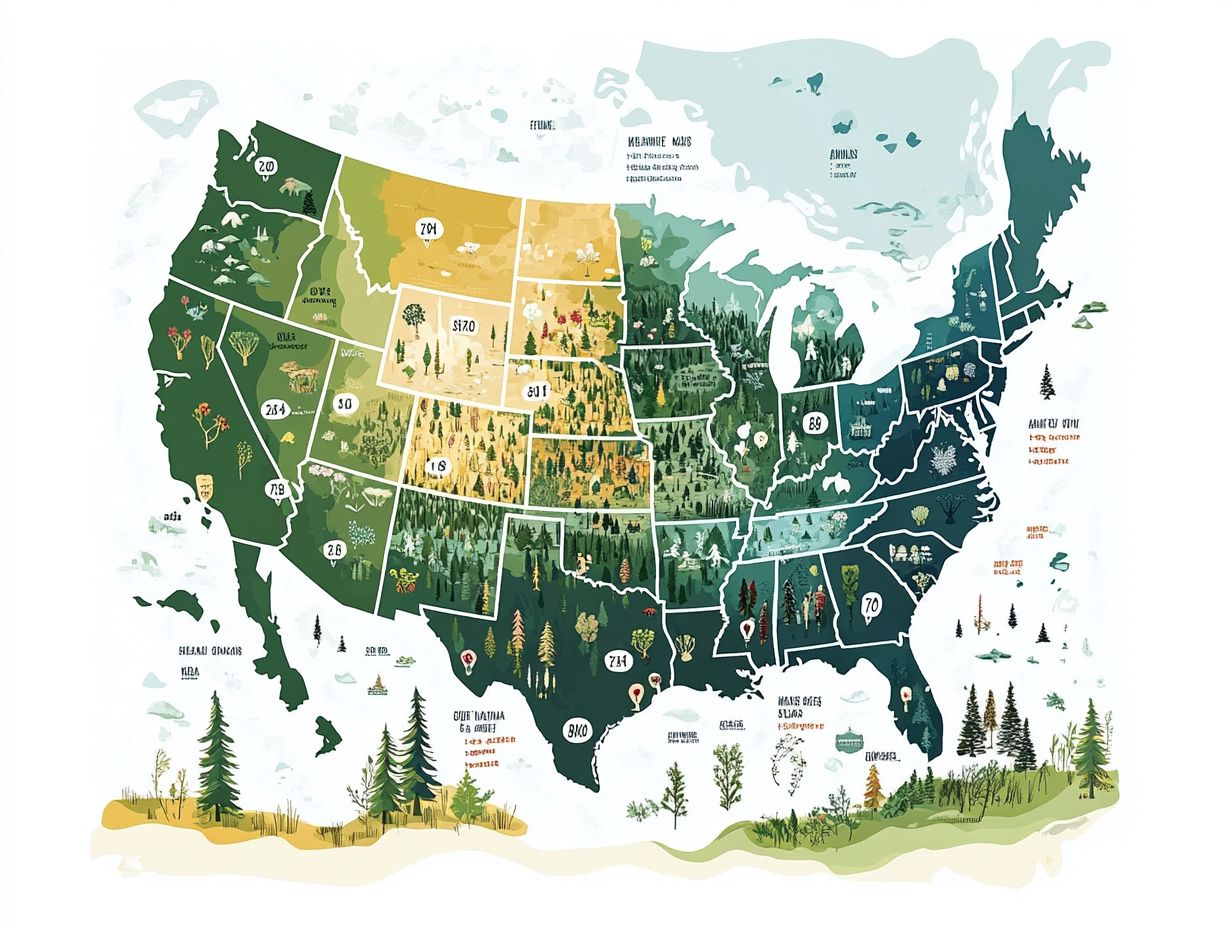
Growing plants outside your designated hardiness zone can be challenging. However, effective strategies and gardening tools can significantly improve your chances of success and plant survival.
Thoughtfully adjusting your gardening practices creates a supportive environment for plants to thrive, even in less-than-ideal conditions. One impactful strategy is to amend the soil with organic matter, improving drainage and nutrient availability both crucial for plants like Jasmine and Avocado Tree that may not be naturally suited to your local environment.
Leverage microclimates sheltered spots protected from harsh winds or bathed in extra sunlight to provide a more favorable setting for growth. Incorporating protective measures can shield sensitive plants from unexpected frosts, further maximizing their potential to flourish.
Embrace these strategies, and watch your garden thrive against the odds, just like Creeping Thyme and Red Maple can under the right conditions.
Protecting Plants in Extreme Zones
Protecting plants in extreme zones is crucial for ensuring their survival, especially during unfavorable weather conditions like extreme cold or unexpected frost dates that can compromise their health.
Take proactive measures to shield them from challenges to maintain their vitality and resilience.
Dealing with Unfavorable Weather Conditions
Dealing with unfavorable weather is a key aspect of gardening, as extreme weather can dramatically affect plant survival and growth. Implement practical strategies, such as using row covers or plant blankets to protect your delicate plants from frost and fierce winds.
Opt for native or drought-resistant species to bolster your garden’s resilience against fluctuating temperatures while minimizing water needs. It s also vital to monitor local frost dates, allowing you to adjust your planting schedule for optimal results.
Stay attuned to weather forecasts and prepare with appropriate protective measures to cultivate healthier plants and enjoy a more bountiful harvest, even when conditions are less than ideal.
Importance of Understanding Plant Hardiness Zones
Understanding plant hardiness zones is crucial for your gardening success. It helps you make informed choices about plant selection and care, which directly impacts plant survival.
By recognizing which plants thrive in your specific climate conditions, you can nurture a diverse array of species. This ensures that each one receives the best conditions for growth. Such insight increases the likelihood of your plants flourishing and minimizes unnecessary losses, saving you both time and resources.
Using tools like the USDA Plant Hardiness Zone Map can greatly simplify your gardening decisions. They help you choose the right plants and understand local climate impacts. Discovering your plant hardiness zone opens up a world of gardening possibilities! With the right knowledge, you can create a thriving and vibrant garden.
Frequently Asked Questions
What is a Guide to Plant Hardiness Zones?

A Guide to Plant Hardiness Zones shows you which plants will flourish in your local climate, and understanding cold hardiness zones for plants is a must-have for any gardener!
How are Plant Hardiness Zones determined?
Plant Hardiness Zones are determined based on the average minimum winter temperature in a specific area. This classification helps identify the types of plants that can survive in each zone.
Why is it important to know your Plant Hardiness Zone?
Knowing your Plant Hardiness Zone is important because it helps you select the right plants for your garden. These plants are most likely to thrive in your specific climate, saving you time, effort, and money in the long run.
Are Plant Hardiness Zones the same in every country?
No, Plant Hardiness Zones can vary between countries and regions. Factors such as latitude, elevation, and proximity to bodies of water affect the average minimum winter temperature and thus the Plant Hardiness Zone.
How can I find out my Plant Hardiness Zone?
You can easily find your Plant Hardiness Zone by using online resources or consulting a physical map. The United States Department of Agriculture (USDA) and many gardening organizations offer Plant Hardiness Zone maps for easy reference.
Can plants survive outside of their recommended Plant Hardiness Zone?
In some cases, plants may survive outside of their recommended Plant Hardiness Zone. However, they may not thrive and may require extra care and protection to survive in a different climate. It is always best to choose plants that are suitable for your specific zone for the best chance of success.

